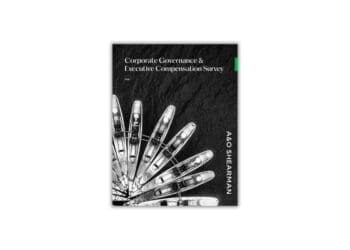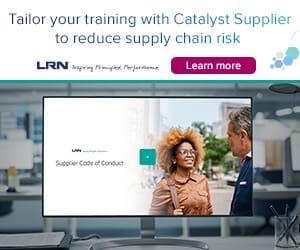The global risk landscape has rarely been more unsettled over the past half-century than it is right now, and a survey of business leaders shows most of them expect the pace of change to continue — or accelerate. Protiviti’s Jim DeLoach digs into the survey results and offers advice for surviving the storm.
From the future of work to questions about the direction of the economy to the onslaught of unwanted surprises, the level of uncertainty in today’s global marketplace and the velocity of change continue to produce a multitude of potential risks that can disrupt an organization’s business model and strategy on very short notice. The business reality is clear: Uncertainty and risk are here to stay. Keeping abreast of emerging risk issues and market opportunities is critical to improving and sustaining organizational resilience.
Protiviti and North Carolina State University’s ERM Initiative conducted a global survey in September and October 2022 to capture perspectives on 38 risks across three dimensions — macroeconomic, strategic and operational — on the minds of 1,304 directors, CEOs and other C-level executives as they looked into the future. Our survey approach asked the participants to rate the potential impact of each risk using a 10-point scale, where “1” meant “no impact at all” and “10” meant “extensive impact.” Based on the mean average scores, we ranked the risks using two time horizons — over the next 12 months, meaning throughout 2023, and over the next 10 years, through 2032. The results were reported on an overall basis and broken down by organization size and type, executive position, industry grouping and geographic location.
Fostering Risk Transparency in the Organization
Serious risks to your company’s financial and reputational health probably aren’t going to walk up and introduce themselves. Protiviti’s Jim DeLoach offers tips on digging to reveal these potential pitfalls.
Read moreDetailsSix takeaways
The key takeaways from this year’s global risk research are:
This year’s survey indicates the highest level of risk we have observed in all 11 years we have conducted this study
Risks across the board have elevated this year. For 2023, all but three risks are ranked higher than they were last year. For 2032, only a single risk is deemed to be a lower threat a decade from now, relative to concerns reported last year.
The economy is top of mind
Myriad factors contribute to uncertain economic conditions that could significantly restrict growth opportunities and impact margins. Rated second overall for 2023, up from fifth in 2022, this risk is ranked eighth looking out 10 years.
With a tough global economic climate anticipated in 2023 as growth projections are cut and segments of the world’s economy are forecasted to contract, economic headwinds may continue for an indeterminate period. The uncertainty over central bank policies amid persistent inflation, rising labor costs and supply chain disruptions, along with the specter of a possible global recession, contribute to clouded economic perceptions, both now and in the future.
In addition to these factors, there is the transition the global economy is undergoing as it becomes more fragmented, with the emergence of European and APAC trading blocks. Given that corporate operations and markets are inherently global, this shift means that many companies are faced with rethinking their strategy and supply chains.
People and culture are once again at the top of the agenda
The ability to attract and retain top talent in a tightening market and succession challenges is the top risk overall for both 2023 and 2032. Globally, it is the only risk rated as “Significant Impact,” meaning the average rating exceeds 6.0 overall. The state of labor markets and expected adoption of advanced technologies are such that significant efforts will be necessary to upskill and reskill existing employees over the next decade. Rising labor costs are an elevated concern. As discussed further below, resistance to change is a formidable cultural obstacle to success. And the workplace continues to evolve over the near term.
Amid the uncertainty, there is a long-term opportunity for companies to think about how their actions today position them for the next phase of growth in the future. In other words, where will companies be as the economy rebounds?
With many companies currently taking a cautionary approach to hiring, the layoffs occurring over recent months present opportunities for companies experiencing a shortage of specialized skills. Now is the time to formulate strategies to retain top performers who may be tempted to look elsewhere. Companies facing layoffs should think about different workforce models. Perhaps it is time to explore a contingent variable workforce option.
But more importantly, companies should find ways to avoid overdoing job cuts in 2023. Rather, they should focus on acquiring and retaining the best talent they can, making smart investments where needed and upskilling employees in the appropriate areas so that they are well-positioned to exit a potential recession in a position of strength.
A reality all companies face is that over the next 10 years, Generation Z will represent a larger share of the workforce as more Baby Boomers (and eventually Generation X’ers) retire. These demographic shifts will drive down the size of the labor force, precipitating competition for highly specialized skills that are becoming increasingly critical across multiple industries.
So what does this mean? First, make succession planning a strategic priority, even beyond the senior executive suite. Second, devise and test knowledge transfer processes and leadership development plans. Finally, consider carefully how the organization is going to retain its key people and keep them engaged long-term.
The 10-year outlook presages disruptive times ahead
Risks on the horizon for 2032 indicate an overarching intersection of disruptive innovation, advancing technologies and talent challenges. Directors and executives indicate concerns about emerging innovations and their organization’s ability to attract, afford and retain the skills needed to embrace change — particularly the necessary changes to technological infrastructures to enable the agility to compete with “born digital” organizations and to leverage sufficiently advanced data analytics to garner the insights needed to be competitive. These risks sustain the ongoing narrative that the 2020s is, indeed, a decade of disruption.
The largest risk increases foretell a story of a changing world
Looking out 10 years, the five largest increases are risks related to geopolitical shifts and regional conflicts, activist shareholder risk pertaining to performance shortfalls (including ESG performance targets), global trade and changing assumptions underlying globalization, adjusting to a remote and hybrid work environment and political uncertainty. The bottom line: The world is changing now, and more change is to come.
Companies having to hunker down over the near-term should also keep an eye on preparing for the future
Leaders should not let belt tightening leave opportunities to position their organization for long-term success on the table. They should undertake appropriate short-term steps to ensure they remain connected to the customer experience, invest in improving organizational agility and resilience, and position themselves to innovate and compete when optimum conditions for the next cycle of growth emerge. But with near-term issues around economic headwinds, labor costs, supply chains and the need for greater flexibility in the workplace and upskilling the workforce, are they up to the task?
To that end, it is important that IT has a seat at the table. Chief information officers need to alter their mindset with a focus on really understanding the business and the customer experience. The business reality is that technology is no longer a mere tool or back-office function; rather, it is literally the pathway forward.
It all begins with what customers want and aligning the organization with embracing inevitable change so it is not behind the curve. This is the task, with innovative technology — such as artificial intelligence, the metaverse and quantum computing — creating practical use cases as time goes on. That is why it is imperative that leaders invest now in the skills needed to support these technologies as they cannot be built overnight.
The proverbial elephant in the room
Over the years, if our annual global surveys have told us anything, it is that accelerated change is the norm rather than a passing trend. Despite this business reality, resistance to change remains and is escalating as a challenging risk for companies to combat. Concerns with resistance to change represent the fourth-rated risk overall for both 2023 and 2032, compared to seventh and eighth for 2022 and 2031, respectively, in last year’s survey. In spite of the disruption that lies ahead, survey participants are concerned about their organizations’ agility to pivot in response to change — an incongruence that can lead to strategic failure. In this digital era of rapid change, this risk points to a need for trust, transparency and effective strategic communications.
It is troubling that survey respondents acknowledged that the world is changing, yet at the same time they express a lack of confidence in their organization’s ability to adjust and adapt. This is truly a challenge of the times as technologies evolve, new sources of competition emerge, the geopolitical balance continues to shift and unwanted surprises of all kinds continue to arise. The various solutions have human capital management and technological underpinnings.
Organizational resiliency is a strategic imperative. First, it is important to review strategies, policies and operations periodically. Because they cannot control the business environment in which they operate, companies should be able to pivot to the unexpected. That means being prepared. It means reality testing strategies against multiple extreme but plausible events that could invalidate critical assumptions underlying the strategy. It means being decisive when it is evident the business model requires adjustment or there is internal dysfunction necessitating immediate attention.
It is a safe bet that the winners over the long term will be more agile than the losers. Expect these companies to excel at obtaining and analyzing market intelligence by deploying advanced data analytics and mastering the big data problem, giving decision makers actionable insights to understand and anticipate customer needs and spawn the productivity and innovation initiatives that will enhance the customer experience continuously.
Expect them to augment their near-term awareness with a longer-term perspective. Thinking long-term about enterprise opportunities and emerging risks can impact resiliency and preparedness for the next decade. It can reveal a number of different challenges than those that may be emerging short-term. And it can facilitate the creation of a focused dashboard of regularly reported lead metrics to the executive team and board of directors.
A year ago, I asserted the following in these pages:
The winners over the next decade will be the ones who act with intention at the speed of the market or upon the onset of disruptive events. Expect them to assess the company’s strategy periodically with a comprehensive forward-looking point of view linked to critical strategic assumptions and risks. Expect them to monitor strategic execution and deploy actionable early warning capabilities to inform management timely of new market developments and emerging risks. Finally, expect them to emphasize the importance of making high-velocity, high-quality decisions by keeping decision-making processes free of bureaucratic nuances.
This assertion remains relevant today. When the narrative is written 10 years from now about the most successful companies over the previous decade, the above attributes defining the innovative cultures that competed and won successfully will get the most air time.
In closing
The executive summary of our survey results includes several calls to action for organizations to improve their capabilities for managing risks. It also offers diagnostic questions executives and directors may find helpful to consider when evaluating risk assessment and risk management processes.




 Jim DeLoach, a founding
Jim DeLoach, a founding 









